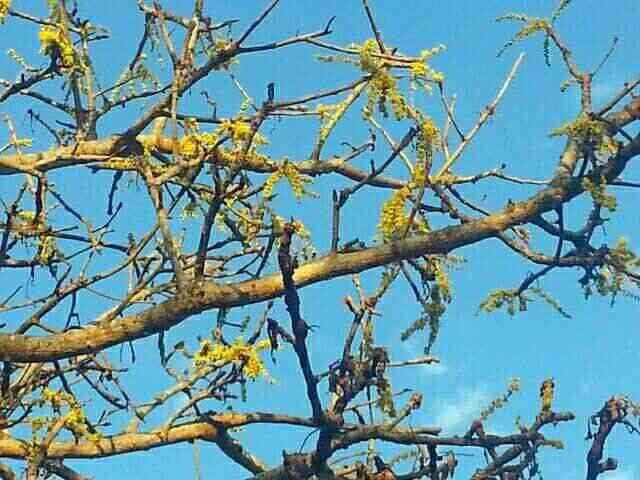
KEEP in the heart of Zimbabwe’s forests lies a tree steeped in legend and traditional medicinal knowledge — the Mugondorosi tree.
Known for its purported ability to treat male erectile dysfunction, this once-abundant species is now facing a grim future.
Overharvesting, driven by rising demand for its bark and roots as natural aphrodisiacs, has brought the Mugondorosi tree to the brink of extinction.
At least 80% of men in Zimbabwe have suffered from erectile dysfunction at some point in their lives, and over 60% of them presently face the problem fairly often.
The Men’s Clinic says the prevalence of erectile dysfunction in Zimbabwe is estimated at 60%, although the majority of men suffering from this are uncomfortable to disclose their problem.
Erectile dysfunction refers to a man’s inability to sustain an erection, which is sufficient for normal sexual intercourse.
The Mugondorosi tree (scientifically known as Lannea discolor), native to Zimbabwe’s dry forests, has long been revered for its medicinal properties.
Among its many uses, traditional healers claim it is particularly effective in treating erectile dysfunction, a condition that affects a significant portion of men, particularly as they age.
For generations, Zimbabwean men have turned to Mugondorosi for its ability to improve virility and sexual performance, believing that the tree’s potent bark and roots can restore their sexual vitality without the side effects associated with modern pharmaceuticals.
“I have used Mugondorosi bark for years. It worked when nothing else did. I tried pills from the clinic, but they gave me headaches and didn’t help. The Mugondorosi worked immediately. But now it’s becoming difficult to find,” says 52-year-old Matongore, a subsistence farmer from Seke.
Its revered status, however, has come at a cost.
The Mugondorosi tree is now on the verge of extinction, its population dwindling as demand surges.
While erectile dysfunction is a natural occurrence that can arise due to age, stress, lifestyle and medical conditions like diabetes and hypertension, the stigma associated with it in many African societies often drives men to seek alternative remedies.
Health expert Mlungisi Ndebele says that erectile dysfunction has complex causes that include stress, lifestyle, and medical conditions such as diabetes.
However, cultural stigmas often drive men to seek alternatives instead of professional care.
“Erectile dysfunction is often seen as a taboo subject, making it hard for men to come forward and get appropriate treatment,” Ndebele says.
“In many cases, men are embarrassed and turn to traditional remedies rather than discussing the issue with a healthcare provider. This contributes to the high demand for plants like Mugondorosi.”
The demand, particularly among aging men, has skyrocketed in recent years, putting unprecedented pressure on the Mugondorosi tree, which is harvested unsustainably to meet the growing market.
In rural areas, where access to Western medical treatments is limited, traditional medicine remains the first line of defence.
Cultural perceptions surrounding masculinity and sexual prowess further exacerbate the demand for natural treatments like the Mugondorosi.
In a society where a man’s virility is often linked to his social standing and reputation, failing to meet certain expectations can be viewed as a deep personal failure.
This pressure, coupled with rising instances of erectile dysfunction, has created an insatiable market for the Mugondorosi tree.
The increasing reliance on Mugondorosi for erectile dysfunction treatment has placed immense pressure on Zimbabwe’s forests.
Traditional healers and herbalists are stripping the tree for its bark and roots, often with little regard for sustainable harvesting methods.
In many cases, trees are being uprooted completely or debarked to the point where they can no longer regenerate.
Traditional healer Sekuru Nhira from Chiredzi, who has treated men with Mugondorosi for over 30 years, acknowledges the dangers, but defends his role in the process.
“The ancestors gave us this tree to help people. We healers only take what we need. But now, people come from far away, paying big money to take as much as they can carry. This is the problem. We need to teach people how to harvest properly, or soon there will be nothing left,” he says.
The ecological consequences are dire.
Mugondorosi, vital to the local ecosystem, is disappearing at an alarming rate.
Conservationists like Blessing Rwatangira, from the Zimbabwe Tree Conservation Trust, stress the urgent need for intervention.
“The over harvesting of Mugondorosi is not just a cultural or medical issue it’s an environmental disaster. This tree plays a crucial role in preventing soil erosion, providing shade, and serving as a habitat for various species. We are seeing entire sections of forests being cleared, with no replanting. At this rate, the Mugondorosi tree could be wiped out in a few years,” he says.
“There is pressure in our society for men to always be virile and strong,” says sociologist Caroline Mwarumba.
“If a man experiences erectile dysfunction, it’s seen as a sign of weakness, so they often feel they must turn to something with a history in their culture. Mugondorosi is seen as a ‘natural’ and trusted remedy, but now that belief is contributing to its extinction.”
Dendrologist Morris Switchen advocates for community-based conservation programmes that combine traditional knowledge with scientific methods.
“Sustainable harvesting techniques, such as only taking a portion of the bark and leaving the tree to regenerate, need to be promoted. Moreover, we must encourage replanting initiatives. Communities which depend on Mugondorosi for both their livelihoods and health need to be educated and supported in these efforts,” he says.
Ndebele stressed the importance of raising awareness about alternative treatments for ED.
“We need to break the stigma around this condition so that men feel comfortable seeking medical advice. Modern treatments are available that are both safe and effective,” he says.
Sustainable harvesting methods, replanting programmes, and a shift in societal attitudes toward erectile dysfunction will be crucial to ensure the tree’s survival for future generations.
Environmentalists say this unsustainable practice is threatening not only the Mugondorosi tree but the entire ecosystem.
The tree plays a crucial role in Zimbabwe’s biodiversity, providing shade, stabilising soil and serving as a habitat for wildlife.
“Mugondorosi extinction could lead to severe ecological imbalances, affecting everything from local wildlife to the livelihoods of communities that rely on forest resources,” Switchen adds.
Some communities like Chigara village in Hurungwe have begun exploring sustainable harvesting methods, such as cultivating the tree in nurseries, but progress remains slow.
Saving the Mugondorosi tree requires a multifaceted approach, involving public education, conservation efforts, and a shift in societal perceptions of erectile dysfunction.










